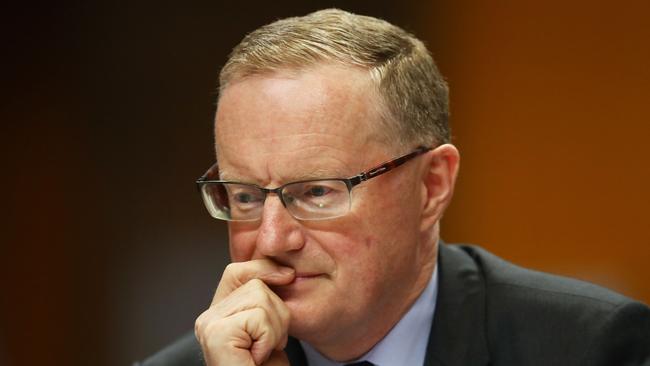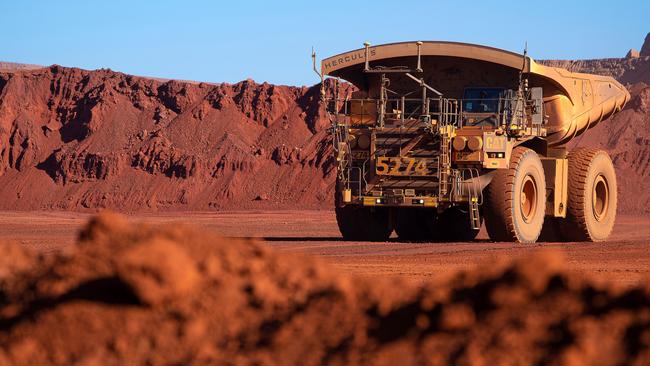Robert Gottliebsen: Federal Reserve’s rate hike raises questions, headache for Philip Lowe


Former Treasurer Josh Frydenberg plunged Australia into a budget deficit to insulate the nation from the impact of Covid-19, and almost all forecasters – including Frydenberg – assumed the nation would be in deficit for a long time.
Only last October, the new Treasurer Jim Chalmers predicted a $36bn deficit in 2022-23, which was slightly higher than the 2021-22 deficit.
But iron ore, gas and coal exports have, in Paul Keating’s famous words, “brought home the bacon” and delivered tax revenue that appears likely to sweep the Australian budget into a surplus in the vicinity of $20bn to $30bn.
By contrast, US Federal Reserve President Jerome Powell in deciding to lift US interest rates by a quarter of a per cent made the decision in the wake of a substantial US government deficit.
The US government is injecting money into the community via its deficit, whereas our government is now accumulating surpluses.
Of course, the Australian surpluses are driven by commodity prices rather than an underlying change in domestic revenue and expenditure.
If commodity prices fall, we will plunge back in the deficit, so the Reserve Bank will need to take this into account in its interest rate response.
In addition, our export growth is riding on the back of carbon – directly in the case of gas and coal and indirectly via iron ore, which requires coal to convert to steel.
When the government big spenders get a whiff that the budget is in surplus and not deficit, they will press Chalmers to go on a spending spree to alleviate social concerns in the electorate.
So far the main over budget spending has been the NDIS, which is a problem that Minister Bill Shorten inherited and is trying to bring under control.
Chalmers has correctly argued that big government spending would further stimulate the economy and boost interest rates even further.
He has been successful, and the government has so far not embarked in the wild spending sprees that sometimes characterise first-term administrations.
Leaving aside the deficit difference, the US and Australian economies are at slightly different stages in the fight to reduce underlying inflation.
There are clear signs in the US that inflation is on the decline. In Australia those signs are harder to find and there are increasing pressures, fostered by government remarks and legislation, to push wages higher to match inflation.
If that happens, it will embed high inflation and require much higher interest rates and smash, which is what some economists predict.

Australian corporate results are showing that there remains an underlying strength in consumer spending, albeit that floods affected NSW and Queensland.
In Australia, JB Hi-Fi and Myer issued special alerts that their trading was better than expected and no major retailer has reported a significant fall.
Powell has indicated while US inflation is starting to subside, further interest rate rises are likely to be required. The US tradition is that when the nation tackles a problem, there are no half measures.
Here in Australia, food prices are still skyrocketing by around nine per cent. While floods can be partly blamed, Australia’s current headline inflation rate of close to eight per cent is not likely to subside significantly in coming months.
That means that despite the budget surplus, we are likely to see at least a quarter of a per cent interest rate rise next week.
But in coming months there will be a divergence between the US and Australian experience.
The massive lending spree which Australian banks embarked on when they believed interest rates would stay low until 2024 will really hit the pockets of those in the mortgage belt as cash interest rate payments balloon and fixed rate mortgages convert to flexible mortgages.
There is debate about the economic severity of this community blow but the largest home lender, the Commonwealth Bank but has warned the Reserve Bank that there will be big impact if it continues to lift rates beyond next week’s quarter per cent.
The second difference is that Australia is no longer encouraging the export of the commodities that drove its surplus, and is looking to swap export revenue for subsidised local energy consumption. This is an incredibly dangerous step.
At the same time, the Australian Competition & Consumer Commission warns there are gas shortages coming. The Federal government refuses to force the Victorian government to develop its enormous low-cost on shore gas reserves. Instead, Victorians are suffering massive gas price hikes, which will boost inflation and interest rates.
It could be argued that Victorians actually voted for long term gas price hikes because the state Coalition opposition wanted to develop the gas.
Longer term, Australia has major growth opportunities carbon storage via plants; the export of rare minerals; better use of our farming lands and possibly opportunities created by better relations with China. But governments are capable of wrecking opportunities






In deciding whether to follow the US interest rate rise, Australia’s Reserve Bank governor Philip Lowe must grapple with a stunning development – rather than the expected deficit, Australia is headed for a substantial budget surplus in the current year.